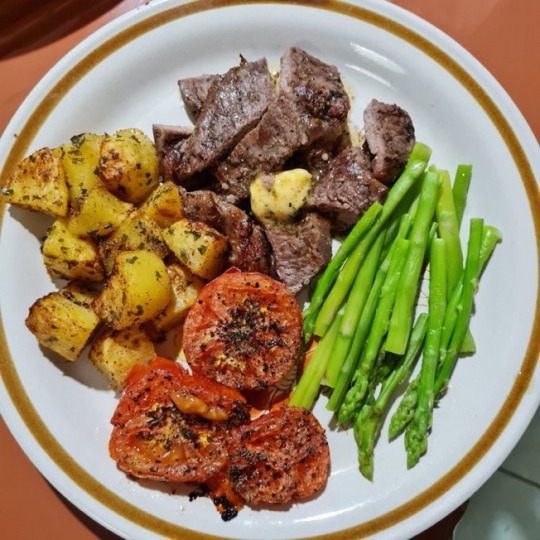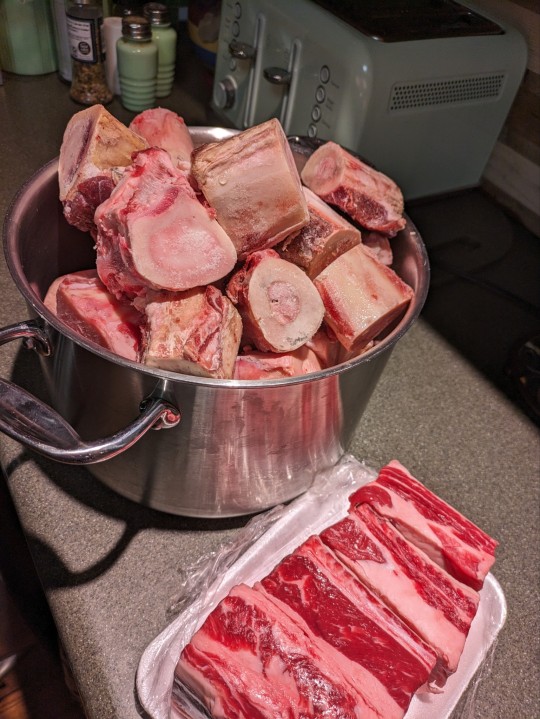#Parboiling
Explore tagged Tumblr posts
Text
🌾 Efficient Paddy Soaking with Steam Boilers for Rice Mills 🌾
Looking to improve the soaking process in your rice mill?
Thermodyne’s Combi Boiler offers a smart solution by delivering warm water and low-pressure steam—perfect for faster and uniform paddy soaking. This method helps increase moisture content efficiently, ensuring better results during parboiling.
✅ Faster soaking ✅ Uniform moisture levels ✅ Improved parboiled rice quality ✅ Energy-efficient solution
Explore how modern steam technology can upgrade your rice processing operations. Visit our Combi boiler page for more information: https://thermodyneboilers.com/combitherm-ultra/ Read blog- Starting a Rice Mill Plant Business: Importance of a Boiler

#RiceMill#PaddySoaking#SteamBoiler#CombiBoiler#ThermodyneBoilers#Parboiling#IndustrialBoiler#RiceProcessing#EnergyEfficiency#AgroIndustry#BoilerForRiceMill
0 notes
Text
What is a Paddy Parboiling Plant and How Does It Work?
Rice processing involves multiple steps to enhance the quality, texture, and nutritional value of rice. One of the most important stages is parboiling, a process that involves soaking, steaming, and drying paddy before milling. This improves the rice’s strength, reduces grain breakage, and enhances its nutritional content. APIT, a leader in rice processing technology, integrates modern parboiling techniques to ensure efficient and high-quality rice production. In this blog, we will explore what a paddy parboiling plant is and how it works.
What is a Paddy Parboiling Plant?
A paddy parboiling plant is a specialized facility where paddy (unprocessed rice) undergoes controlled soaking, steaming, and drying before milling. The goal of this process is to enhance the quality and durability of rice while preserving essential nutrients. Parboiling plants use advanced machinery to automate the process, ensuring efficiency and consistency in rice production.
How Does a Paddy Parboiling Plant Work?
1. Soaking the Paddy
The first step in parboiling is soaking the paddy in warm water. This allows the rice grains to absorb moisture, which helps in loosening the husk and allowing nutrients to move into the grain. Proper soaking is essential to ensure uniform quality.
2. Steaming the Paddy
After soaking, the paddy is transferred to steam chambers where it is subjected to controlled heat. The steaming process gelatinizes the starch inside the grains, making them harder and reducing the chances of breakage during milling. This also enhances the cooking quality of rice.
3. Drying the Paddy
Once the steaming is complete, the paddy is dried using advanced drying systems. This step reduces the moisture content to a safe level for storage and further processing. Proper drying prevents mold growth and increases the shelf life of rice.
4. Milling and Polishing
After drying, the paddy is sent to the milling section, where the outer husk is removed. Since parboiled rice is harder, it experiences less breakage compared to raw rice. The rice can then be polished to achieve the desired appearance.
Benefits of a Paddy Parboiling Plant
Increases nutritional value by retaining essential vitamins and minerals
Reduces grain breakage, resulting in higher milling yields
Enhances storage life by preventing spoilage and insect infestation
Improves cooking quality, making rice firmer and less sticky
Ensures efficient water and energy usage, making it more sustainable
Conclusion
A paddy parboiling plant plays a crucial role in rice processing, improving both the quality and durability of rice. By using advanced soaking, steaming, and drying techniques, parboiling enhances nutritional content and reduces waste. APIT continues to drive innovation in rice processing, ensuring that consumers receive high-quality parboiled rice. With modern technology, parboiling plants are making rice production more efficient and sustainable than ever before.
0 notes
Text
What is a Paddy Parboiling Plant and How Does It Work?
Rice processing involves multiple steps to enhance the quality, texture, and nutritional value of rice. One of the most important stages is parboiling, a process that involves soaking, steaming, and drying paddy before milling. This improves the rice’s strength, reduces grain breakage, and enhances its nutritional content. APIT, a leader in rice processing technology, integrates modern parboiling techniques to ensure efficient and high-quality rice production. In this blog, we will explore what a paddy parboiling plant is and how it works.
What is a Paddy Parboiling Plant?
A paddy parboiling plant is a specialized facility where paddy (unprocessed rice) undergoes controlled soaking, steaming, and drying before milling. The goal of this process is to enhance the quality and durability of rice while preserving essential nutrients. Parboiling plants use advanced machinery to automate the process, ensuring efficiency and consistency in rice production.
How Does a Paddy Parboiling Plant Work?
1. Soaking the Paddy
The first step in parboiling is soaking the paddy in warm water. This allows the rice grains to absorb moisture, which helps in loosening the husk and allowing nutrients to move into the grain. Proper soaking is essential to ensure uniform quality.
2. Steaming the Paddy
After soaking, the paddy is transferred to steam chambers where it is subjected to controlled heat. The steaming process gelatinizes the starch inside the grains, making them harder and reducing the chances of breakage during milling. This also enhances the cooking quality of rice.
3. Drying the Paddy
Once the steaming is complete, the paddy is dried using advanced drying systems. This step reduces the moisture content to a safe level for storage and further processing. Proper drying prevents mold growth and increases the shelf life of rice.
4. Milling and Polishing
After drying, the paddy is sent to the milling section, where the outer husk is removed. Since parboiled rice is harder, it experiences less breakage compared to raw rice. The rice can then be polished to achieve the desired appearance.
Benefits of a Paddy Parboiling Plant
Increases nutritional value by retaining essential vitamins and minerals
Reduces grain breakage, resulting in higher milling yields
Enhances storage life by preventing spoilage and insect infestation
Improves cooking quality, making rice firmer and less sticky
Ensures efficient water and energy usage, making it more sustainable
Conclusion
A paddy parboiling plant plays a crucial role in rice processing, improving both the quality and durability of rice. By using advanced soaking, steaming, and drying techniques, parboiling enhances nutritional content and reduces waste. APIT continues to drive innovation in rice processing, ensuring that consumers receive high-quality parboiled rice. With modern technology, parboiling plants are making rice production more efficient and sustainable than ever before.
0 notes
Text

Haveta cook the fancy meals myself because can’t find a decent steakhouse in the boonies where I live now (unless I drive an hour plus to the state capital).
But family loved it, so I thank my past self for deciding to take up cooking as a hobby ☺️
#food#this is related to the last reblog of whether I can cook or not#also everything here except for the parboiled asparagus is cooked in the air fryer#so I’m one of those annoying people that swear by one
82 notes
·
View notes
Text
Call my mother to ask her where the arborio she said is in the cabinet is bc I wanted to make risotto and she said well it’s there. Check the cabinet, there’s just parboiled in there. “Isn’t it the same thing?” Guys I’m about to kill myself
10 notes
·
View notes
Text

LOOK UPON THIS SCENE AND WEEP, FOR BONE BROTH DAY IS SOON UPON US
19 notes
·
View notes
Text
Al-an but in this Au architects are obscenely fragile and cannot under any circumstances get even a paper cut...but he wants to go scanning ghost leviathans in the void.
#al an#subnautica#Sbz#Robin has yo quarantine him for his own good#When he gets ideas he hets them#He has a perminant limp because he fell off the moonpool ramp.#He looks to robin as a role model and she hates it#Because it means she has to be responsible or he'll end up doing something stupid#He a soft shrimp..parboiled#robin ayou#al an x robin#robin/al an
23 notes
·
View notes
Text
reminding myself that sometimes it’s more important to make things good than to do it right. and similarly sometimes you need to do it right to make it good
#this is about adding less water to my coldbrew & parboiling potatoes before making home fries respectively#i hate doing extra steps i think i should just be able to put the potatoes in the pan & make them perfect. but that’s not how it works#chatpost
17 notes
·
View notes
Text
the house is HAUNTED by a ghost who HATES chips
#mine never cook and are raw after an hour even with parboiling and 200°C#another housemate just literally burnt his#and another just set off the fire alarm cooking them even though the chips were fine
4 notes
·
View notes
Text
Difference Between Basmati and Non-Basmati Rice

Rice is a staple food for billions of people, crossing cultures and cuisines around the world. Among the vast varieties, two terms are often encountered: basmati and non-basmati. Although these names may seem straightforward, the differences between the two go beyond size or aroma. Whether you're a chef, a buyer or simply a curious eater, understanding the unique characteristics of basmati and non-basmati rice can enhance your appreciation for this versatile grain.
In this blog, we'll explore the differences that make these types of rice unique, from their characteristics and uses to their role in the global market.
Introduction to Basmati and Non-Basmati Rice
Basmati rice, known for its long, thin grains and distinctive aroma, has been cultivated for centuries in the Indian subcontinent. Its name, derived from the Sanskrit word "vasmati," means "fragrant." This variety is synonymous with premium quality and is widely used in dishes like biryani and pilaf.
On the other hand, non-basmati rice is an umbrella term for all other varieties of rice that do not fit into the basmati category. With thousands of variants, non-basmati rice comes in different shapes, sizes, and flavors, making it suitable for a number of dishes.
Key Characteristics of Basmati Rice
Basmati rice stands out for several reasons:
Grain length and texture: Basmati grains are long, thin and are known to expand after cooking, sometimes doubling in size. They do not remain sticky, leading to a soft texture.
Aroma: Its natural aromatic compound, 2-acetyl-1-pyrroline, gives basmati its distinctive scent, which is often compared to pandan leaves.
Geographical Indication: Authentic basmati is grown in specific regions of India and Pakistan, protected under Geographical Indication (GI) status.
Nutritional Value: It is rich in carbohydrates and has a lower glycemic index than some non-basmati varieties, making it a healthier option for diabetics.
These characteristics make basmati a premium rice variety, which is often reflected in its price in the global market.
Unique Characteristics of Non-Basmati Rice
Non-basmati rice includes several varieties, each with its own unique characteristics:
Grain Variety: Non-basmati rice can be long, medium, short or round. Popular types include parboiled rice, brown rice and sticky rice.
Taste and Texture: Unlike basmati, non-basmati rice varies greatly in taste and texture, catering to regional and culinary preferences around the world.
Availability: With higher production rates and wider adaptability, non-basmati rice is more accessible and affordable than its aromatic counterpart.
This diversity makes non-basmati rice a versatile choice for dishes ranging from sushi to risotto and everyday meals.
Culinary Use Comparison
When it comes to cooking, the choice between basmati and non-basmati rice often depends on the dish:
Basmati Rice:
Ideal for dishes requiring light, sticky grains.
Common in Indian, Middle Eastern and Persian cuisine.
Often used in biryanis, pilafs and fried rice due to its aromatic and soft qualities.
Non-basmati Rice:
Suitable for dishes that require a certain texture, such as sticky rice for sushi or starchy rice for creamy risotto.
Widely used in East Asian, African and Latin American cuisines.
Preferred for daily meals due to its affordability and accessibility.
Understanding the culinary merits of each variety ensures that dishes turn out the way you want, whether you are cooking at home or running a restaurant.
Market Demand and Global Preferences
The global rice market is heavily influenced by consumer preferences and rice prices:
Demand for Basmati Rice:
Known for its premium quality, Basmati is a top choice in international markets such as the Middle East, Europe, and the United States.
Its export value is quite high, driven by its GI-protected status and aromatic properties.
Demand for Non-Basmati Rice:
With its affordability and adaptability, non-basmati rice dominates the markets in Africa and Southeast Asia.
The growing demand for specialty varieties such as Jasmine and Arborio rice has further increased its global appeal.
While Basmati rice commands higher prices, non-Basmati rice plays a vital role in meeting the diverse demands of global consumers.
Ultimately, the differences between Basmati and non-Basmati rice go beyond aesthetics and aroma; they represent diverse culinary traditions and cultural preferences. Whether you are savouring a fragrant Basmati biryani or enjoying a comforting bowl of non-Basmati rice, each variety has its own charm.
Understanding these differences not only helps in making informed choices but also increases your appreciation for this simple grain that nourishes millions of people across the world.
2 notes
·
View notes
Text
brooklyn public library is like. we know you like it when we keep it. 💯 degrees farenehifht
5 notes
·
View notes
Text
squash mania experiments begin
#Mistook an orange kabocha for a red Kuri :-(#But it was yummy#Might do this method again but with a higher temp on thea roast#And not forgetting how long I'm parboiling for lol
2 notes
·
View notes
Note
you're welcome <3
and u better not look away baby, just look at me in the eyes as I suck that pretty cock okay? or else punishment <3
punishment you say?? 🤭 what if there’s something reaaally super duper interesting just over the other side of the room and I wanna look at it? what’ll you do then baby?
#starry answers#I have the attention span of a parboiled egg but I’m sure there’s an incentive to keep my focus <3
2 notes
·
View notes
Text

Amanita muscaria, commonly known as the fly agaric or fly amanita, is a basidiomycete of the genus Amanita. Native throughout the temperate and boreal regions of the Northern Hemisphere, Amanita muscaria has been unintentionally introduced to many countries in the Southern Hemisphere, generally as a symbiont with pine and birch plantations, and is now a true cosmopolitan species. It associates with various deciduous and coniferous trees.
Arguably the most iconic toadstool species, the fly agaric is a large white-gilled, white-spotted, usually red mushroom, and is one of the most recognizable and widely encountered in popular culture, including in video games—for example, the extensive use of a recognizable Amanita muscaria in the Mario franchise and its Super Mushroom power-up—and television—for example, the houses in The Smurfs franchise.
Despite its easily distinguishable features, Amanita muscaria is a fungus with several known variations, or subspecies. These subspecies are slightly different, some having yellow or white caps, but they are all usually called fly agarics, and they are most of the time recognizable by their notable white spots. Recent DNA fungi research, however, has shown that some of these variations are not the same species at all, such as the peach-colored fly agaric (Amanita persicina) for example, but the name 'fly agaric' is still commonly used.
Although poisonous, death due to poisoning from A. muscaria ingestion is quite rare. Parboiling twice with water draining weakens its toxicity and breaks down the mushroom's psychoactive substances; it is eaten in parts of Europe, Asia, and North America. All Amanita muscaria varieties, but in particular A. muscaria var. muscaria, are noted for their hallucinogenic properties, with the main psychoactive constituents being muscimol and its neurotoxic precursor ibotenic acid. A local variety of the mushroom was used as an intoxicant and entheogen by the indigenous peoples of Siberia.
More on:Wikipedia
#mushrooms#amanita muscaria#fly agaric#iconic mushroom#fungus#nature#autumn#fall#Northern Hemisphere#poisonous#psychoactive substances#Parboiling twice with water draining#red mushrooms
2 notes
·
View notes
Text


BEHOLD ... POTATOES
#nat.txt#n; cooking#parboiled and then fried in duck fat with shallots garlic thyme and topped with chives and blue cheese#these babies deserved decadence and by god i gave it to em!!!#food //
5 notes
·
View notes
Text
ParBoiler – Trusted Manufacturer of Wet Scrubbers for Industrial Applications in India
ParBoiler provides high-efficiency wet scrubbers designed to handle demanding industrial environments. Our solutions effectively control dust, gases, and fumes, helping industries meet regulatory standards and promote a safer workplace. Backed by innovation and expert engineering.
#WetScrubberIndia#ParBoiler#IndustrialAirControl#AirPollutionSolution#ScrubberManufacturers#IndustrialSafetySolutions#CleanTechIndia#EnvironmentalSolutions#EmissionControlEquipment#MadeInIndia
0 notes